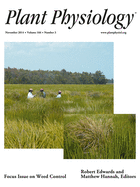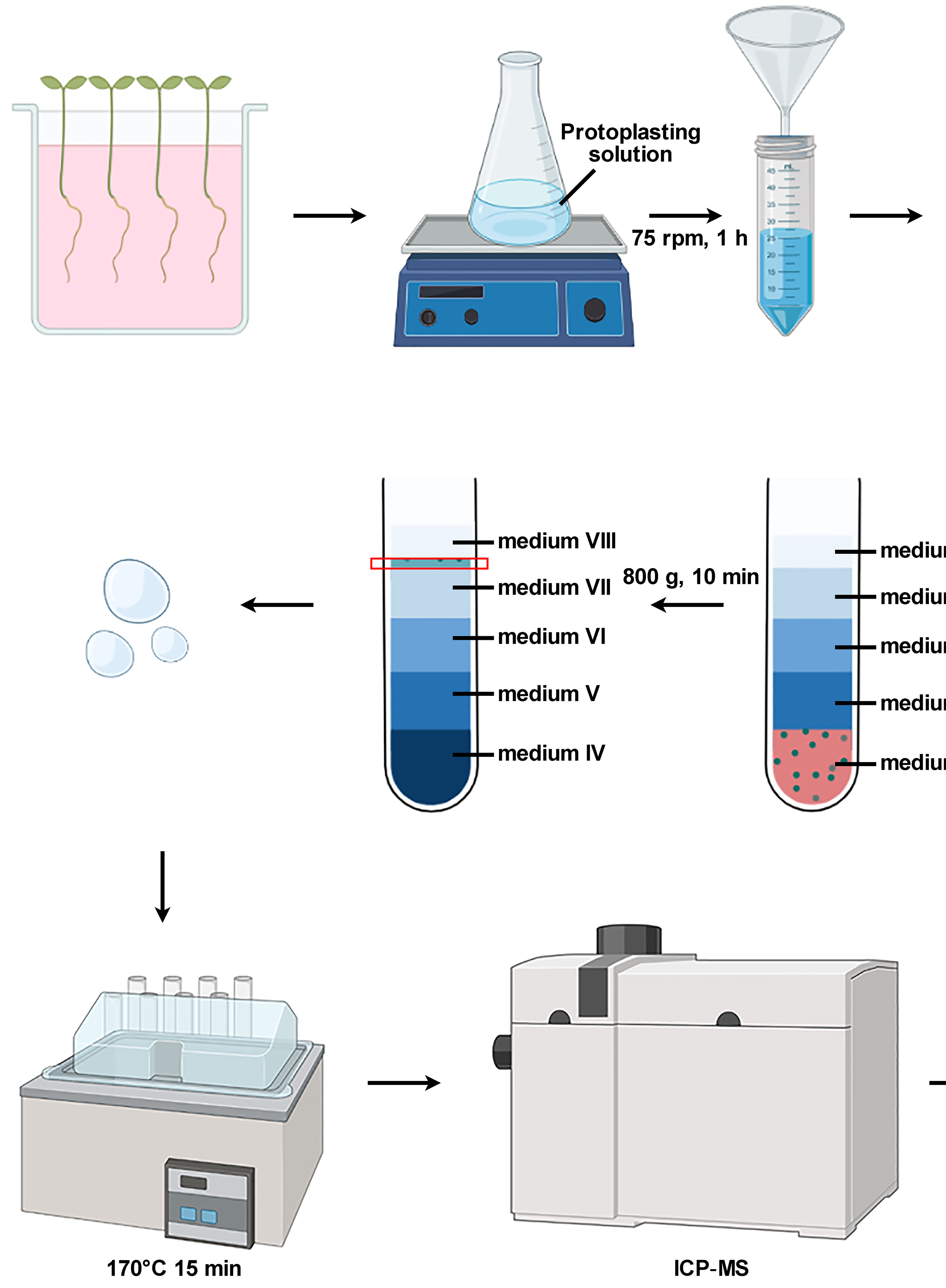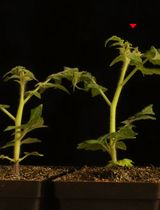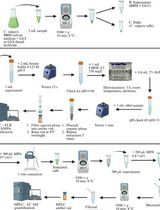- EN - English
- CN - 中文
Metabolite Profiling of Mature Arabidopsis thaliana Seeds Using Gas Chromatography-Mass Spectrometry (GC-MS)
采用气相色谱质谱仪(GC-MS)分析成熟拟南芥种子代谢谱
发布: 2016年11月05日第6卷第21期 DOI: 10.21769/BioProtoc.1981 浏览次数: 11756
评审: Tie LiuArsalan DaudiAnonymous reviewer(s)
Abstract
Metabolite profiling using gas chromatography-mass spectrometry (GC-MS) permits the annotation and quantification of a relatively wide variety of metabolites, covering a wide range of biochemical groups of metabolites. Lisec et al. (2006) established a method for GC-MS profiling in plants. Based on this protocol, we provide here a detailed GC-MS-based metabolite profiling protocol to identify compounds belonging to several biochemical groups in the primary metabolism of mature Arabidopsis thaliana seeds (Cohen et al., 2014). The protocol uses methoxyamine hydrochloride and N-methyl-N-trimethylsilyltriflouroacetamide (MSTFA) as derivatization reagents, as previous studies indicated these are the most appropriate compounds for profiling of plant metabolites. The protocol is relatively rapid, delivers reproducible results, and can be employed to profile metabolites of many other types of plant tissues with only minor modifications. In this context, developing seeds can serve as an excellent system for studying metabolic regulation, since during their development, a massive synthesis of reserve compounds occurs controlled under tight transcriptional regulation and associated with temporally distinct metabolic switches.
Materials and Reagents
- 2 ml microfuge safe seal lock-cap tubes (SARSTEDT, catalog number: 72-695-500 )
- 1.5 ml microfuge safe seal lock-cap tubes (SARSTEDT, catalog number: 72-690-001 )
- Mature dry Arabidopsis thaliana (ecotype Colombia-0) seeds
- Liquid nitrogen
- HPLC-grade methanol (Merck Millipore, catalog number: 67-56-1 )
- HPLC-grade chloroform (Merck Millipore, catalog number: 67-66-3 )
- HPLC-grade water (Avantor Performance Materials, J.T. Baker, catalog number: 7732-18-5 )
- Pyridine (Merck Millipore, catalog number: 110-86-1 )
- DL-norleucine internal standard (Sigma-Aldrich, catalog number: N1398 )
- Methoxyamine hydrochloride (Sigma-Aldrich, catalog number: 226904 )
- N-methyl-N-trimethylsilyltriflouroacetamide (MSTFA) (Sigma-Aldrich, catalog number: 24589-78-4 )
- n-alkanes mixture (see Recipes)
n-Dodecane (C12) (Sigma-Aldrich, catalog number: 44010 )
n-Pentadecane (C15) (Sigma-Aldrich, catalog number: 76509 )
n-Octadecane (C18) (Sigma-Aldrich, catalog number: 74691 )
n-Nonadecane (C19) (Sigma-Aldrich, catalog number: 74158 )
n-Docosane (C22) (Sigma-Aldrich, catalog number: 43942 )
n-Octacosane (C28) (Sigma-Aldrich, catalog number: 74684 )
n-Dotriacontane (C32) (Sigma-Aldrich, catalog number: 44253 )
n-Hexatriacontane (C36) (Sigma-Aldrich, catalog number: 52919 ) - Pre-cooled (4 °C) extraction buffer containing DL-norleucine internal standard solution (see Recipes)
- Methoxyamine hydrochloride derivatization reagent (see Recipes)
- n-alkanes time standards mix solution (see Recipes)
- N-methyl-N-trimethylsilyltriflouroacetamide (MSTFA) derivatization reagent + pre-mixed n-alkanes time standards (see Recipes)
Equipment
- Vacuum desiccator
- Liquid nitrogen dewar
- Table-top centrifuge (able to reach 20,817 x g at 4 °C) (Eppendorf)
- Table-top vortex (Benchmark Scientific Inc.)
- CentriVap benchtop centrifugal vacuum concentrator (Labconco)
- Benchtop multi-Therm heat-shaker (Benchmark Scientific Inc.)
- GC-MS system (Agilent Technologies, model: 7890A ) coupled with a mass selective detector and a Gerstel multipurpose sampler MPS2S (or any other GC-MS system)
- DB-5ms capillary column (30 m, 0.25 mm i.d., and 0.25 μm thickness) (or any other column suitable for primary metabolic profiles) (Agilent Technologies, catalog number: 122-5532G )
- VF-5ms capillary column (30 m + 10 m EZ-guard, 0.25 mm i.d., and 0.25 μm thicknesses) or any other column suitable for primary metabolic profiles (Agilent Technologies, catalog number: CP9013 )
- 10 mm Certified Clear Screw Thread Kit: 2 ml Thermo ScientificTM NationalTM 10 mm wide opening screw thread vials and inserts manufactured from clear glass + PTFE/silicone septa (Thermo Fisher Scientific, catalog number: CERT4010-91 ).
- 200 μl MicroSert glass inset (31 x 5 mm) (Thermo Fisher Scientific, catalog number: C4012-465 )
- 1 ml clear glass high recovery reaction vials with attached 13-425 open top phenolic screw-cap + PTFE/silicone septa (WHEATON, catalog number: W986294NG )
- 20 ml pre-assembled EPA vials + PTFE screw-caps (Thermo Fisher Scientific, catalog number: B7800-20 )
Procedure
文章信息
版权信息
© 2016 The Authors; exclusive licensee Bio-protocol LLC.
如何引用
Readers should cite both the Bio-protocol article and the original research article where this protocol was used:
- Cohen, H., Matityahu, I. and Amir, R. (2016). Metabolite Profiling of Mature Arabidopsis thaliana Seeds Using Gas Chromatography-Mass Spectrometry (GC-MS). Bio-protocol 6(21): e1981. DOI: 10.21769/BioProtoc.1981.
- Cohen, H., Israeli, H., Matityahu, I. and Amir, R. (2014). Seed-specific expression of a feedback-insensitive form of CYSTATHIONINE-γ-SYNTHASE in Arabidopsis stimulates metabolic and transcriptomic responses associated with desiccation stress. Plant Physiol 166(3): 1575-1592.
分类
植物科学 > 植物新陈代谢 > 代谢物谱
系统生物学 > 代谢组学 > 种子
植物科学 > 植物生物化学 > 其它化合物
您对这篇实验方法有问题吗?
在此处发布您的问题,我们将邀请本文作者来回答。同时,我们会将您的问题发布到Bio-protocol Exchange,以便寻求社区成员的帮助。
提问指南
+ 问题描述
写下详细的问题描述,包括所有有助于他人回答您问题的信息(例如实验过程、条件和相关图像等)。
Share
Bluesky
X
Copy link














